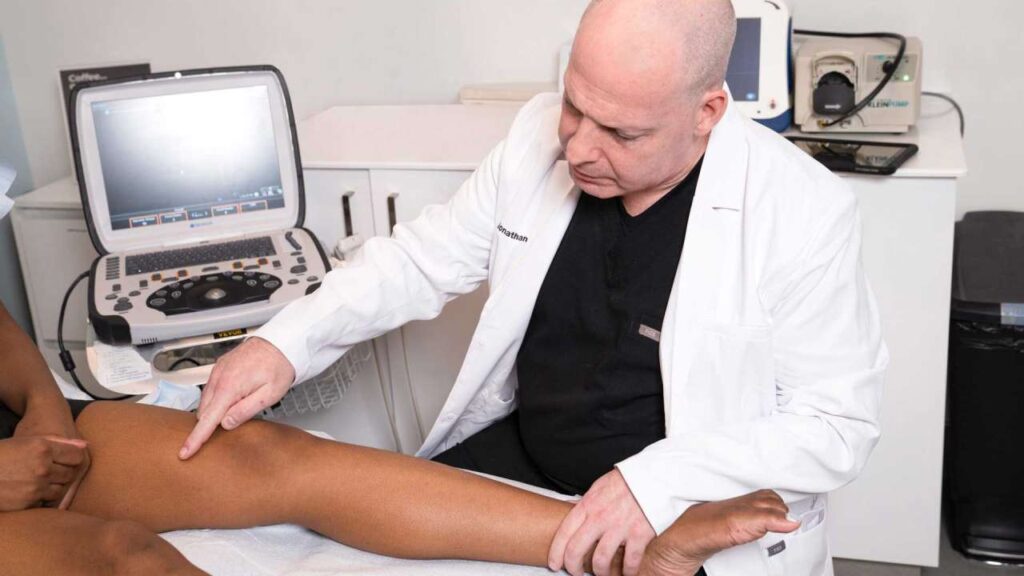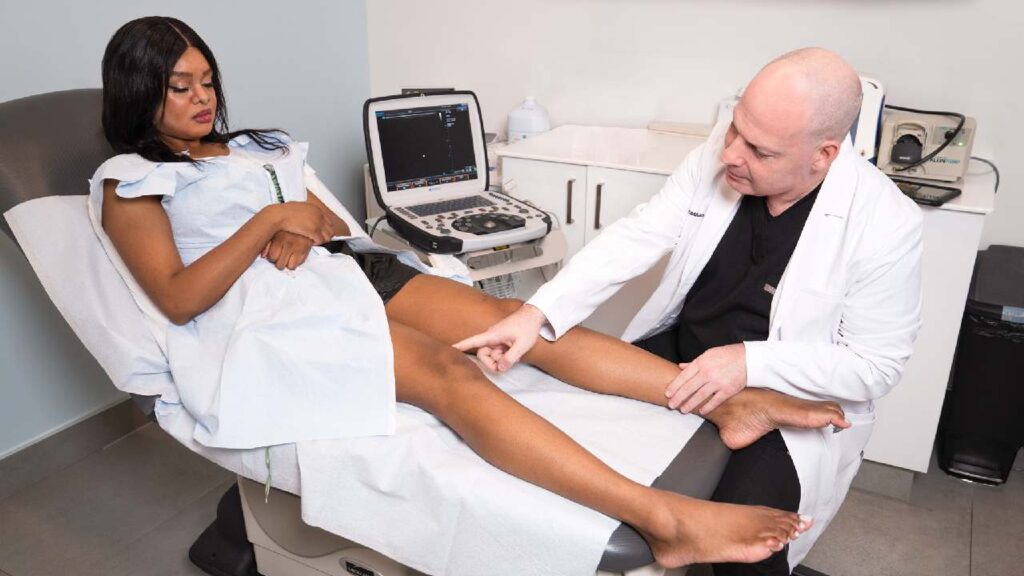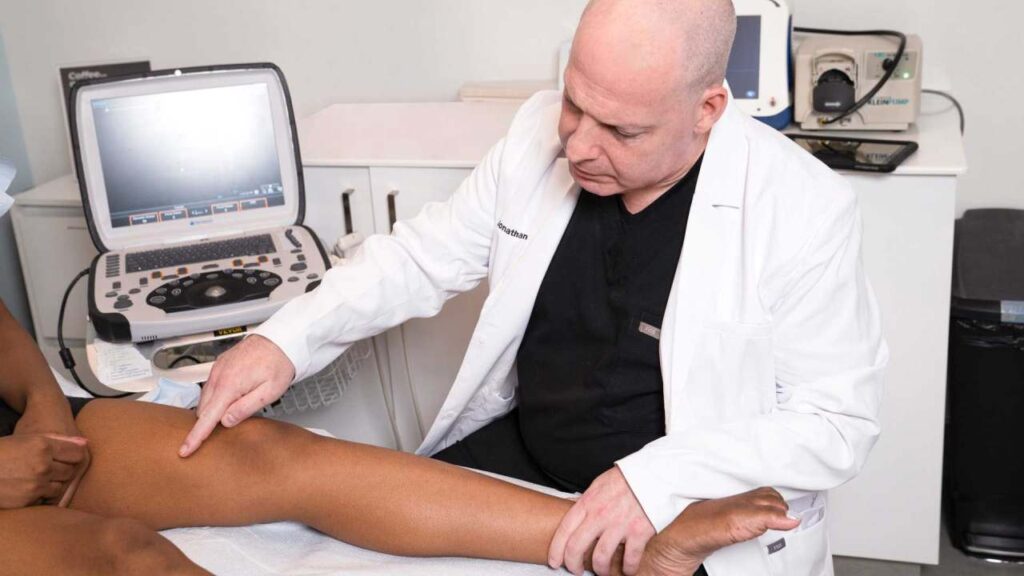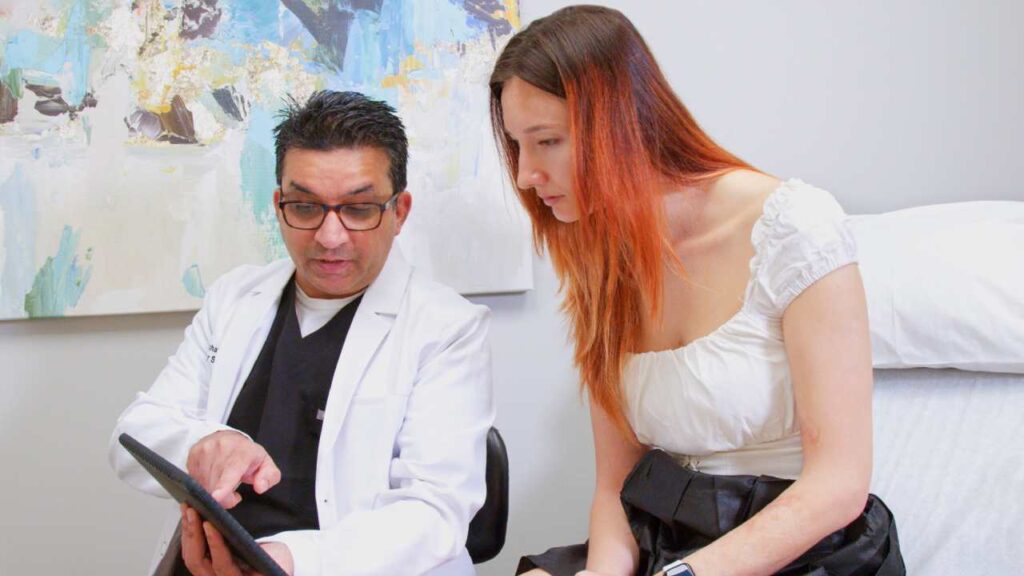Making a decision about where to seek treatment for heaviness in your legs can seem complicated, so a great way to start is by evaluating the treatment options the vein center offers. At Vein Treatment Center New York, you can be sure to expect state-of-the-art treatment from excellent doctors. Click HERE to book an appointment at our excellent vein clinic, or keep reading to learn more about the worst and best options for treatment.
Venous insufficiency can result in spider or varicose veins, which can be uncomfortable. Some of Dr. Google’s prescriptions may have brought temporary relief, while others generated no results at all, but the only medically approved and reliable remedy is to get vein treatment from a professional and qualified vein doctor.
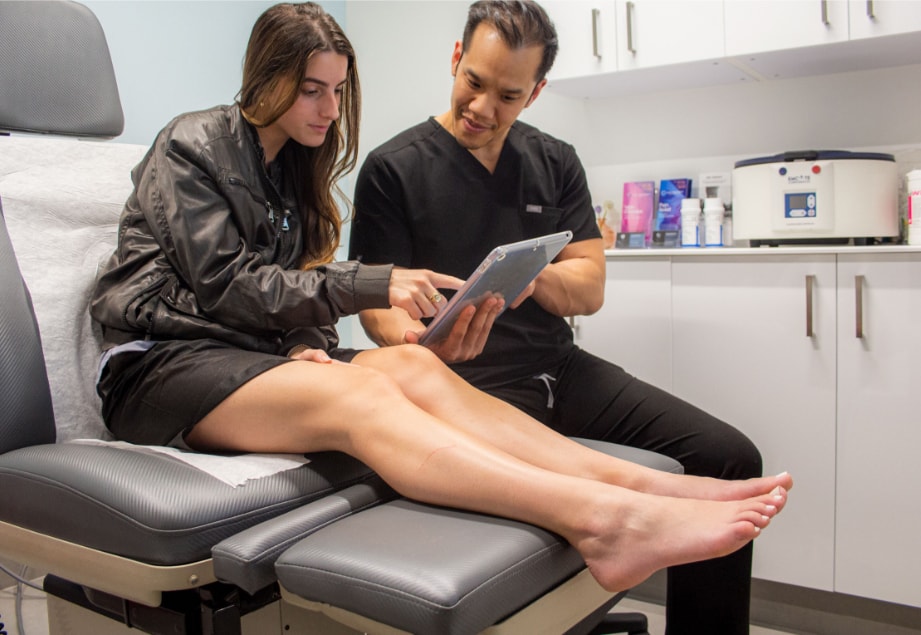
1. Apple Cider Vinegar
Apple cider vinegar has increased in popularity as a “cure-all” solution for everything from digestion to hair care, so it’s no surprise that some sources recommend using it to treat varicose veins. There is no verified evidence to suggest that apple cider vinegar may treat varicose veins, whether by soaking gauze in it and wrapping it around varicose veins or by swallowing it.
2. Witch Hazel
Witch hazel is a yellow-flowered plant that is supposed to reduce inflammation or soothe irritated skin. These are both indications of venous insufficiency, particularly as veins bulge and weaken the skin above spider veins and varicose veins. However, witch hazel does not address the underlying cause of venous insufficiency so it is not an effective curative treatment.
3. Essential Oils
Essential oils are compounds extracted or distilled from plants that take on the scent, flavor, or other attributes of the plant. Some essential oils that are known to reduce inflammation can help reduce some of the pain and suffering associated with spider and varicose veins, but this is only a transitory impact that may be attributable to the placebo effect. They can occasionally cause more harm than benefit since, due to their potency, the use of essential oils in high amounts can provoke allergic reactions.
4. Horse Chestnut Seed
Horse chestnut seed is a dietary supplement that includes a chemical that works similarly to a blood thinner and is occasionally prescribed for chronic venous insufficiency. Although it is not a stand-alone treatment and cannot treat varicose and spider veins, when combined with a minimally invasive vein treatment at a vein center, it may aid in the healing process of venous ulcers.
5. Compression Stockings
Compression socks improve blood circulation by providing pressure around the ankles and feet, pushing blood towards the heart. They are a temporary solution that cannot permanently treat varicose veins because they are only effective for as long as they are worn. Some compression stockings are available over-the-counter, but to avoid harm, you should have them professionally fitted by a vein specialist.
1. Diet
Consuming a range of colored fresh fruits and veggies guarantees that your body receives all of the necessary nutrients. Most green vegetables and fruits are also abundant in fiber, which improves bowel movement and can help you prevent constipation, which can increase vein pressure. Additionally, limiting salty foods in your diet while staying hydrated to help your body flush out extra salts can lower blood pressure in your vein walls, thus preventing vein disease from progressing.
2. Keeping Legs Elevated
Varicose veins are caused by venous insufficiency, which happens when blood flows in the opposite direction of the heart and accumulates around the veins in the legs, causing them to bulge. To counteract this, lift your legs and allow gravity to assist blood flow back to your heart. Simply propping up your legs after a long day of standing on your feet will improve blood circulation, minimize swelling in the legs, and lessen blood collection in your veins.
3. Massage
Massages are not only extremely soothing, but they can also enhance blood circulation in the legs. It’s important to be careful with the level of pressure, because although gentle pressure on your lower limbs can relieve some of the pain and discomfort caused by varicose veins, direct pressure on the varicose veins can cause harm because the skin in that area is particularly sensitive and fragile.
4. Exercise
When dealing with venous insufficiency, get your heart beating! Aerobic activity that raises your heart rate can improve blood circulation in your legs and drive collected blood from your veins back into its usual flow channel. Walking, running, or jogging can help work your calf muscles and improve your blood circulation. Don’t forget to stretch before and after to protect your muscles and enhance blood circulation.
5. Non-Restrictive Clothing
You may not have considered your wardrobe to be a part of your health, but if you have spider veins or varicose veins, loose, flowing, and non-restrictive clothes that facilitate blood circulation are far superior to tight, form-fitting ones. Flat shoes, rather than high heels, reduce increased blood flow and pooling in the foot.
Treatment Options
All of the methods discussed above can temporarily relieve pain caused by vein disease, but the only long-term solution is to seek vein therapy from a vein doctor at a vein treatment clinic.
Sclerotherapy is the most often used method for treating visible spider veins. The vein doctor uses tiny needles to inject medicine (sclerosant) that improves the appearance of spider veins in just one month.
Depending on what the vein doctor determines is best for your case, VenaSeal, radiofrequency ablation, or varithena is utilized to target the saphenous veins that produce varicose veins. VenaSeal is a vein adhesive that is used to shut the saphenous vein in the leg, which is the source of varicose veins. Radiofrequency ablation uses heat radiation that is completely safe to seal down the injured vein’s walls. Varithena is a sclerotherapy foam that is injected directly into the vein to reduce varicose vein symptoms and size. All of these treatment options cause minimal discomfort, take less than a half-hour, and require no anesthesia or recovery time involved.
Where can I seek vein treatment near me?
Schedule your consultation with one of our incredible vein doctors and be assured of the highest-quality care. Dr. Juan Montoya is a Yale-trained double board-certified specialist in venous medicine and cardiothoracic surgery, and is bilingual in English and Spanish. Dr. Sareh Rajaee is also a Yale-trained vascular surgeon with extensive experience in vein and arterial disease. Both are highly trained and qualified, most importantly, they prioritize patient care and strive to provide treatment with compassion and professionalism.
If you are ready to get started on your vein ablation journey, book your appointment at the Vein Treatment Center New York in Manhattan or Long Island and go into your appointment at a vein center in New York feeling more prepared and informed about your treatment plan!
